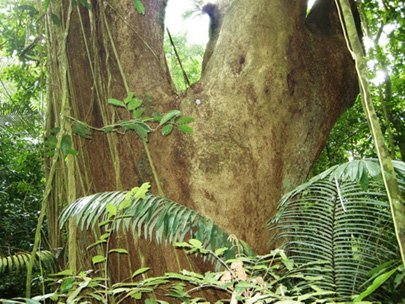
Covering over 22,000 hectares at a height of 300-600 meters above sea level, the forest has magnificent limestone mountains rising majestically from the green rice-terraces and traditional stilt houses of the Muong hill-tribe and a rich habitat for some of Asia’s rarest species. That is why it is no wonder that researchers, naturalists, enthusiasts and conservationists alike are drawn to this corner of the world.
The forest is also an archaeological site as there are many relics dating back 12,000 years such as tombs, arrows, axes and knives.
To Cuc Phuong, travelers firstly will be guided to visit the Cuc Phuong fauna garden where 2,000 fauna species grow. Then move onto the home of flora systems with 100 animals, 300 birds, 36 reptiles and fish, butterflies and insects. Some of the rare animals are panthers, bears, gibbons, flying squirrels and pheasants.
Lying in a limestone area, Cuc Phuong includes numerous caves, in which the highlights are ‘Nguoi Xua’ where two ancient tombs have been discovered, along with Neolithic remains and evidence of stone implements. There have been similar finds at Trang Khuyet (Crescent Moon), Thanh Minh and Con Mong Caves. While Hang Dan Cave is known for its bat population and Con Mooc Cave is famous for its biodiversity.
The forest is also known for centuries-old giant trees and giant lianas.
Hiking in Cuc Phuong will see you follow long trails and passing through old-growth forests with long vines wrapped around strangled trees, where you will visit caves, waterfalls and streams in the forest or stop over at a Muong ethnic
village. Tourists will see stilt houses, waterwheels, bamboo rafts, brocade looms and insights into the unique Muong culture.
SGT